How Call Centers Use IVR Systems Effectively

Interactive Voice Response (IVR) systems have revolutionized how you interact with businesses. These systems allow you to navigate menus, provide information, or resolve issues through automated voice prompts. They help call centers streamline operations and deliver better customer experiences. For instance, IVR systems can reduce call volume by 25% by handling common inquiries before they reach agents. This improves efficiency and ensures you get faster resolutions.
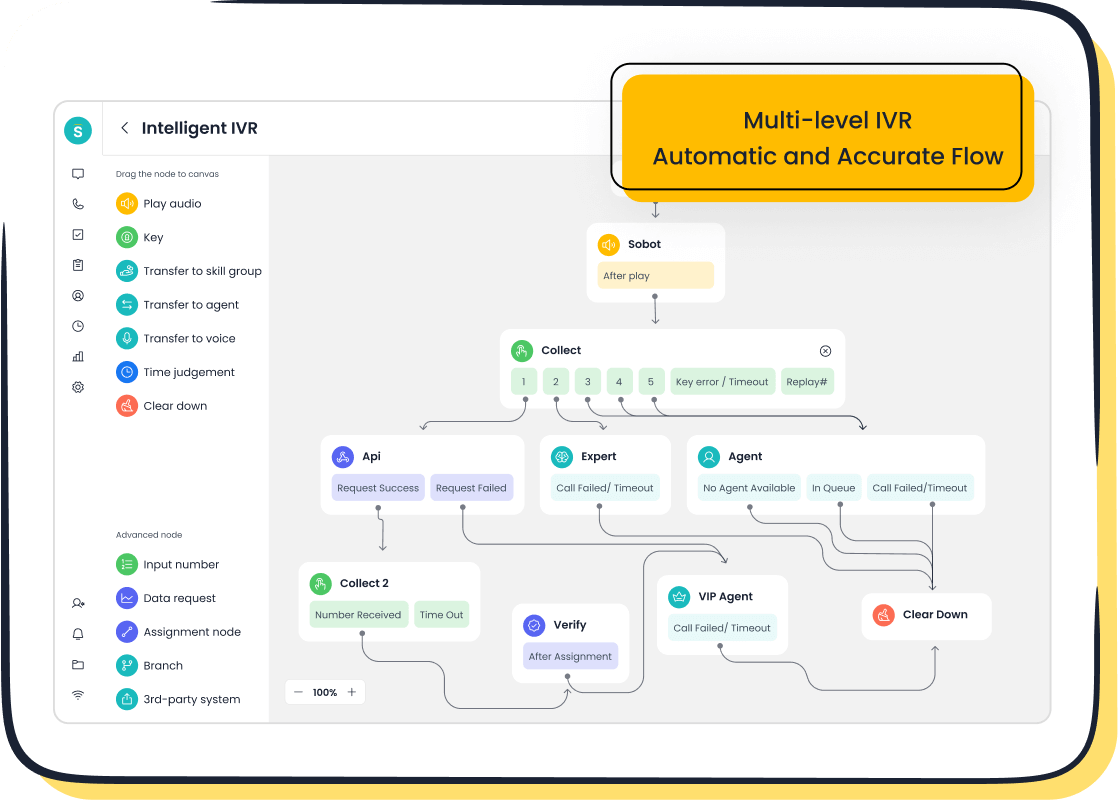
When implemented effectively, an IVR system for call center use enhances customer satisfaction by offering self-service options and accurate routing. Companies adopting IVR often report cost savings of up to 20%. Sobot's Voice/Call Center takes this a step further with features like intelligent IVR, smart call routing, and real-time monitoring. These tools ensure your interactions are seamless, efficient, and tailored to your needs.
What Is an IVR System for Call Center Use?

Definition of Interactive Voice Response (IVR)
An Interactive Voice Response (IVR) system is a technology that allows you to interact with a business's phone system through voice commands or keypad inputs. It uses pre-recorded prompts and menus to guide you through various options, helping you resolve issues or access information without needing to speak to a live agent. For example, when you call a bank to check your account balance or report fraud, the IVR system handles your request by processing your input and retrieving the necessary data.
IVR systems are widely used across industries to enhance customer service. In healthcare, they assist with scheduling appointments or renewing prescriptions. In retail, they help you track orders or initiate returns. These systems streamline operations, reduce wait times, and improve your overall experience.
Tip: Businesses often design IVR systems to align with their goals. For instance, they analyze call data to identify common inquiries and create conversation flows that address these efficiently.
Core Components of IVR Systems
IVR systems rely on several key components to function effectively. Each plays a crucial role in ensuring smooth interactions and accurate call routing. Here's a breakdown:
| Core Component | Description |
|---|---|
| Telephony Integration | Connects the system to phone lines and call-routing networks. |
| Speech Recognition and DTMF Detection | Processes spoken commands or keypad inputs to understand your requests. |
| Voice Prompts and Menus | Provides clear instructions and self-service options for navigating the system. |
| Integration with Databases | Retrieves real-time information like account balances, order statuses, or appointment details. |
These components work together to create a seamless experience for you. For example, speech recognition allows you to say "Check my balance," while database integration retrieves the exact amount in your account.
How IVR Systems Work in Call Centers
IVR systems in call centers follow a structured process to handle your inquiries efficiently. When you call, the system greets you with a pre-recorded message and presents a menu of options. You can respond by speaking or pressing a number on your keypad. The system then processes your input and routes your call to the appropriate department or provides the information you need.
Here’s how the process typically unfolds:
- Define Needs: Businesses identify their goals and analyze call data to understand what customers frequently ask.
- Choose a Platform: They select an IVR platform that fits their requirements and budget.
- Design the Flow: The conversation flow is mapped out to ensure smooth interactions.
- Train the System: Relevant data is fed into the system, and its natural language understanding (NLU) engine is trained.
- Test and Refine: The system undergoes rigorous testing to ensure accuracy and user satisfaction.
For example, 63% of calls in call centers involve security and identification checks, which take an average of 26 seconds per call. By automating these tasks, IVR systems save time and reduce costs. In the U.S., this automation could save contact centers up to $19.8 billion annually.
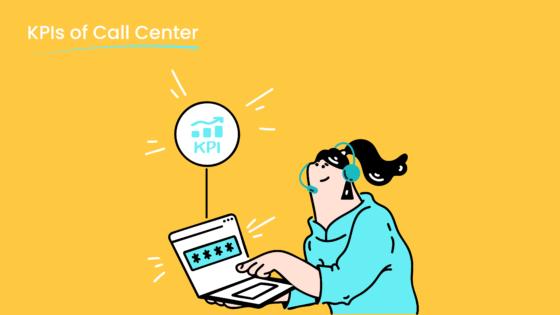
However, IVR systems must be designed carefully. Poorly designed systems can frustrate you, leading to longer wait times and increased workloads for agents. Advanced IVR technology, like Sobot's intelligent IVR, addresses these challenges by offering features like smart call routing and real-time monitoring. These tools ensure your call is handled efficiently, improving both your experience and the call center's performance.
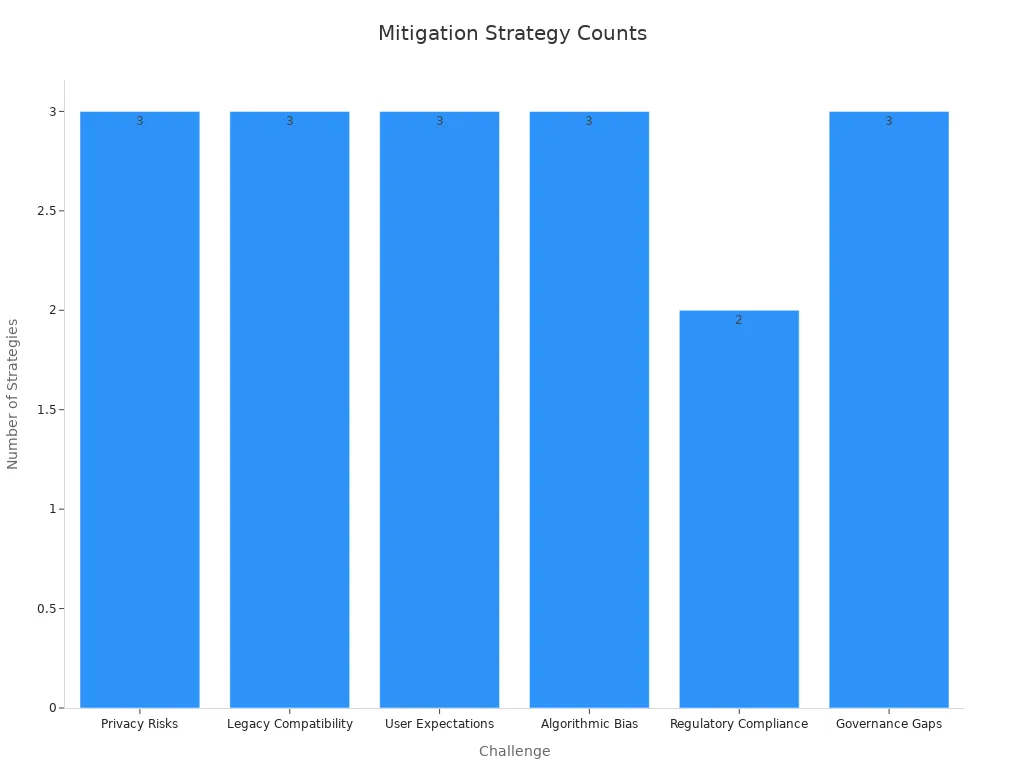
Common Applications of IVR Systems in Call Centers
Interactive voice response systems play a vital role in modern call centers. They streamline operations and improve customer satisfaction by automating key processes. Below are some of the most common applications of IVR systems in call centers.
Call Routing and Prioritization
IVR systems excel at call routing, ensuring your inquiries reach the right department or agent. When you call a business, the system analyzes your input and directs your call based on predefined rules. For example, if you press "1" for billing or "2" for technical support, the system routes you to the appropriate team. This reduces wait times and enhances efficiency.
Prioritization is another critical feature. IVR systems can identify high-priority calls, such as those from VIP customers, and route them to senior agents. This ensures that urgent issues receive immediate attention. Smart call routing, like the one offered by Sobot's Voice/Call Center, uses advanced algorithms to optimize this process. It considers factors like agent availability, customer history, and call type to deliver a seamless experience.
Tip: Businesses can improve customer satisfaction by designing IVR menus that are simple and intuitive. Clear instructions and minimal options help you navigate the system quickly.
Self-Service Options for Customers
Self-service is one of the most valuable applications of IVR systems. These systems empower you to resolve issues without speaking to an agent. For instance, you can check your account balance, track an order, or reset a password using automated prompts. This saves time for both you and the call center.
However, not all customers prefer self-service. Studies show that 66.8% of customers prefer speaking to a live agent, while only 15.7% choose IVR. Despite this, self-service options remain essential for handling routine tasks efficiently. Businesses can strike a balance by offering both self-service and live support.
| Evidence Type | Findings | Percentage |
|---|---|---|
| Preference | Customers preferring live agent service over IVR | 67% |
| Preference | Customers choosing IVR as their preferred option | 15% |
| Transaction Abandonment | Customers abandoning transactions while dealing with IVR | 50% |


Sobot's intelligent IVR technology enhances self-service by offering features like multilingual support and real-time data integration. These tools ensure that your interactions are smooth and efficient, even when using self-service options.
Collecting Customer Information
IVR systems are highly effective at collecting customer information. When you call a business, the system may ask for details like your account number, phone number, or reason for calling. This data helps the system route your call and provides agents with the context they need to assist you.
Advanced IVR systems, like those offered by Sobot, go a step further. They use real-time analytics to gather insights from customer interactions. For example, they analyze call volume, wait times, and self-service success rates to identify trends and optimize performance.
| Feature | Description |
|---|---|
| Real-time analytics | Analyzes data from customer interactions to gain insights into performance and behavior. |
| Data collection | Collects data on call volume, wait times, and self-service success rates for optimization. |
| Integration with systems | Combines insights from various sources for better data-driven decisions. |
- IVR systems also gather data on caller preferences and behavior patterns.
- This information helps businesses optimize IVR menus and improve service delivery.
By integrating with CRM systems, IVR applications ensure that agents have access to complete customer profiles. This reduces the need for you to repeat information and speeds up the resolution process. Sobot's Voice/Call Center excels in this area, offering seamless integration and real-time data tracking to enhance customer interactions.
Outbound Notifications and Alerts
IVR systems are not just for handling inbound calls. They also excel at delivering outbound notifications and alerts, which improve operational efficiency and enhance your experience as a customer. These notifications keep you informed about important updates, such as appointment reminders, shipping statuses, or payment due dates. By automating these tasks, businesses reduce the workload on their customer service teams and ensure you receive timely information.
For example, imagine receiving a reminder about an upcoming doctor’s appointment through an automated call. You can confirm or reschedule it directly through the IVR system without needing to contact a live agent. This proactive approach minimizes no-shows and late payments, helping businesses maintain smooth operations while improving customer satisfaction.
Here are some key benefits of outbound notifications and alerts:
- Timely Updates: You stay informed about critical events like delivery schedules or account changes.
- Self-Service Options: You can take actions like rescheduling or confirming appointments without waiting for an agent.
- Operational Efficiency: Businesses save time and resources by automating routine notifications.
Sobot’s Voice/Call Center takes outbound notifications to the next level. Its intelligent IVR technology enables businesses to send personalized alerts tailored to your preferences. For instance, if you’re a frequent shopper, you might receive updates about exclusive sales or order tracking. This level of customization ensures that you feel valued and engaged.
Note: Studies show that proactive notifications significantly reduce customer frustration by addressing issues before they arise. This approach fosters trust and loyalty, which are essential for long-term success.
Sobot's Role in Enhancing IVR Applications
Sobot’s Voice/Call Center stands out as a leader in IVR applications. Its advanced features ensure that your interactions with businesses are smooth, efficient, and satisfying. The platform offers intelligent IVR capabilities, allowing businesses to customize greetings, build menus, and route calls effectively. This ensures that your inquiries are handled promptly and accurately.
One of the standout features of Sobot’s IVR technology is its seamless integration with other systems. For example, when you call a business, the system retrieves your information from a connected database, ensuring that agents have all the context they need to assist you. This reduces the need for you to repeat details, saving time and improving your overall experience.

Sobot also excels in multilingual support, making it easier for businesses to serve diverse customer bases. Whether you speak English, Spanish, or another language, Sobot’s IVR systems ensure that you feel understood and valued. Additionally, the platform’s real-time monitoring and analytics provide businesses with actionable insights to optimize their operations continuously.
Here’s how Sobot enhances IVR applications:
- Smart Call Routing: Calls are directed to the right agents or departments based on your input.
- AI-Powered Voicebot: Advanced AI ensures accurate understanding of your requests.
- Global Reach: With access to phone numbers worldwide, businesses can serve you no matter where you are.
- High System Uptime: A 99.99% SLA guarantees reliable service whenever you need it.
By choosing Sobot, businesses not only improve their operational efficiency but also elevate your customer experience. The platform’s innovative features ensure that every interaction is seamless, personalized, and effective.
Benefits of Using IVR Systems in Call Centers
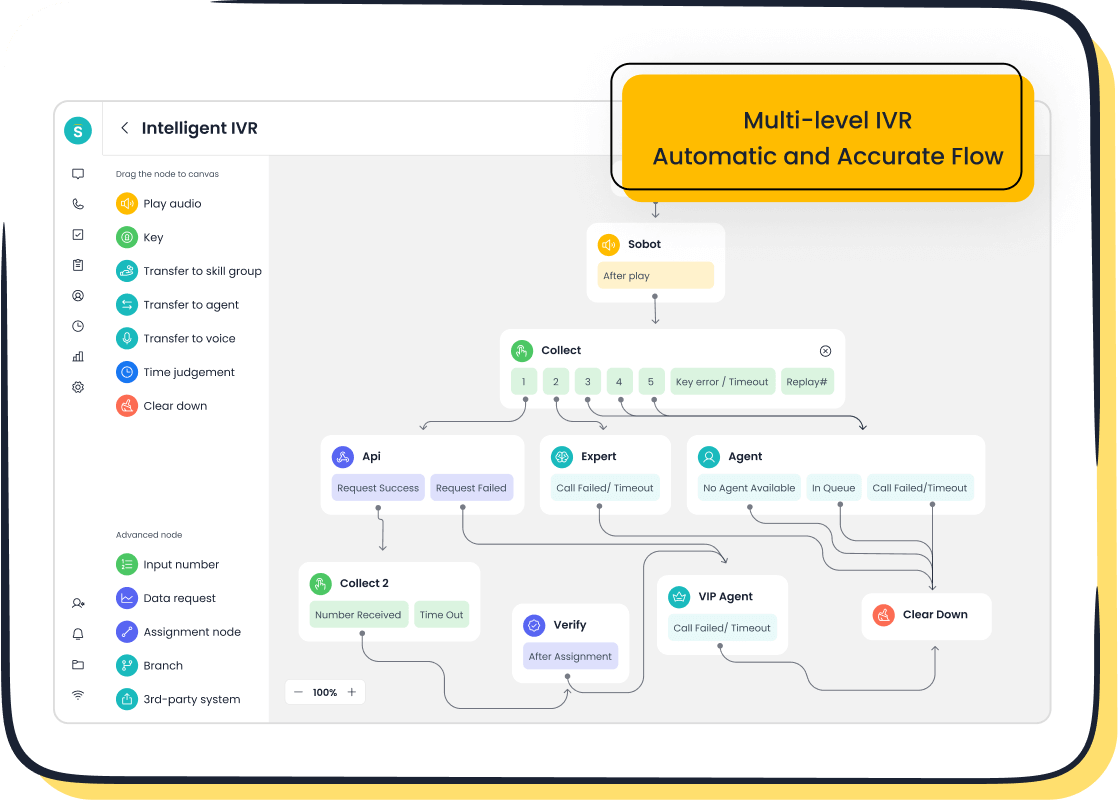
Cost Savings and Resource Optimization
IVR systems significantly reduce operational costs by automating routine tasks. Instead of hiring additional staff to handle repetitive inquiries, businesses can rely on these systems to manage high call volumes efficiently. For example, an IVR system for call center use can handle multiple calls simultaneously, ensuring no customer waits unnecessarily. This optimization not only saves money but also improves resource allocation.
Tasks like account balance checks or order tracking, which typically require human intervention, can be automated through interactive voice response technology. This reduces staffing needs and operational expenses. Companies that implement IVR systems often report substantial savings, allowing them to reinvest in other areas of their business. By streamlining operations, IVR systems ensure that your call is handled quickly and effectively, enhancing overall efficiency.
Improved Customer Service and Accessibility
IVR systems enhance customer service by making it more accessible and convenient. These systems operate 24/7, allowing you to access information or resolve issues at any time. Whether you need to check your account balance late at night or confirm an appointment early in the morning, IVR systems ensure you’re never left waiting.
Call routing is another area where IVR systems excel. By directing your call to the appropriate agent or department based on your input, they minimize transfer times and errors. This improves your experience and ensures quicker resolutions. Self-service options also empower you to handle simple queries independently, boosting satisfaction and reducing the workload on agents.
For example, Sobot’s intelligent IVR technology enhances accessibility by offering multilingual support and seamless integration with customer databases. These features ensure that your needs are met efficiently, no matter when or where you call.
Enhanced Call Handling Efficiency
IVR systems improve call handling efficiency by automating processes and reducing manual intervention. When you call a business, the system collects essential information, such as your account number or reason for calling, before routing you to the right agent. This saves time and ensures agents have the context they need to assist you effectively.
Advanced IVR systems, like those offered by Sobot, take efficiency to the next level. Features such as real-time monitoring and smart call routing optimize the entire process. For instance, Sobot’s platform uses AI-powered voicebots to understand your requests accurately, reducing the need for follow-ups. This not only improves your experience but also enhances the call center’s overall performance.
By automating routine tasks and streamlining workflows, IVR systems allow businesses to handle more calls without compromising quality. This scalability makes them an invaluable tool for growing companies looking to maintain high levels of customer satisfaction.
Scalability for Growing Call Volumes
As your business grows, handling an increasing number of calls becomes a challenge. IVR systems provide a scalable solution to manage this growth effectively. These systems can handle multiple calls simultaneously, ensuring no customer waits unnecessarily. Whether your call center receives hundreds or thousands of inquiries daily, IVR technology adapts to meet the demand without compromising efficiency.
For example, in the telecommunications industry, implementing a skills-based ACD system with a detailed competency matrix reduced average handle time by 18% and improved first-call resolution by 23%. Similarly, healthcare providers using omnichannel ACD solutions achieved a 37% reduction in patient wait times. These results highlight how IVR systems enhance scalability while maintaining high service standards.
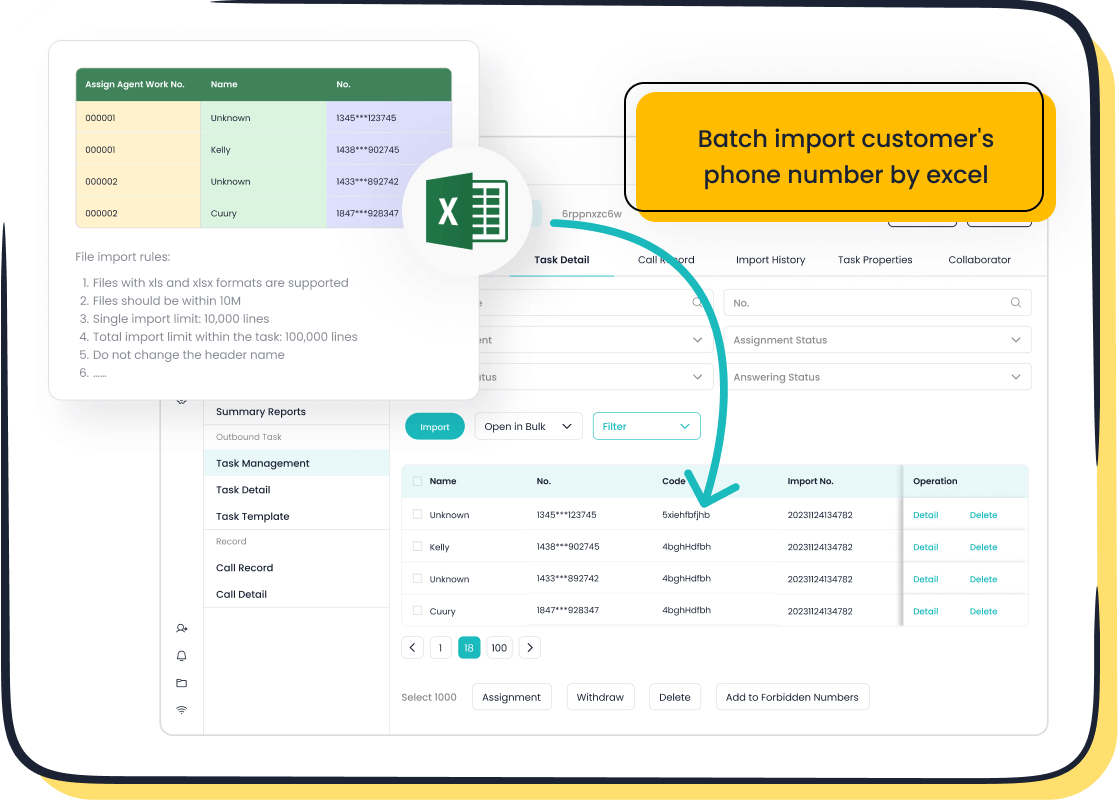
Sobot’s Voice/Call Center takes scalability to the next level. Its intelligent IVR technology ensures seamless call routing, even during peak hours. With features like global number availability and AI-powered voicebots, Sobot enables businesses to handle growing call volumes effortlessly. The platform’s 99.99% uptime guarantees reliable service, ensuring your customers always receive prompt assistance.
Tip: Regularly monitor call data to identify trends and adjust your IVR system’s capacity. This proactive approach ensures your system scales effectively as your business grows.
How Sobot's Voice/Call Center Maximizes These Benefits
Sobot’s Voice/Call Center offers advanced tools to maximize the benefits of IVR systems. Its intelligent IVR allows you to customize greetings, build menus, and route calls based on customer needs. This ensures every interaction is efficient and tailored to the caller’s requirements.
The platform’s AI-powered voicebot enhances customer satisfaction by understanding requests accurately and providing quick resolutions. For instance, in the financial services sector, an AI-enhanced ACD platform improved customer satisfaction scores by 14% and first-call resolution by 9%. Sobot’s integration capabilities further streamline operations by connecting IVR systems with CRM platforms, giving agents access to complete customer profiles.
With global number availability and time zone support, Sobot ensures your call center operates smoothly across regions. Real-time monitoring and analytics provide actionable insights, helping you optimize performance and maintain high efficiency. By choosing Sobot, you equip your business with a scalable, reliable, and customer-focused IVR solution.
Challenges of IVR Systems and How to Overcome Them
Common User Dissatisfaction Issues
IVR systems often face criticism due to user dissatisfaction. Long wait times are a major issue. For example, 42% of customers calling telecom companies and 29% of banking customers abandon calls because of delays. Many users believe IVR systems exist to avoid handling complaints. A survey revealed that 53% of respondents held this view. Long wait times also lead to dissatisfaction, with 72% of customers expressing frustration. Negative experiences impact businesses directly. About 61% of dissatisfied customers are less likely to return, and 45% share their complaints on social media.
To address these issues, businesses must focus on reducing wait times and improving system responsiveness. Clear menus and efficient call routing can help minimize delays. Additionally, offering live agent support alongside self-service options ensures customers feel heard and valued.
Design and Usability Challenges
Poor design and usability often hinder the effectiveness of IVR systems. Long menus increase cognitive load, making navigation difficult. Confusing options lead to errors, frustrating users. A well-designed IVR system should avoid these pitfalls. For instance, shorter menus and clear options improve user experience. Minimizing errors through intuitive layouts ensures smoother interactions.
| Usability Guideline | Description |
|---|---|
| Avoid long menus | Users prefer shorter menus to reduce cognitive load. |
| Provide clear options | Options should be clearly stated to avoid confusion. |
| Minimize errors | Design should help users avoid mistakes in navigation. |
By adhering to these guidelines, businesses can create IVR systems that are easy to use and efficient.
Solutions to Improve IVR System Effectiveness
Improving IVR systems requires a combination of technology and customer-centric strategies. Implementing Natural Language Processing (NLP) enhances call routing accuracy. Self-service options empower customers to perform tasks like scheduling appointments or checking balances. Tracking call metrics identifies areas for improvement. Regular testing ensures the system functions optimally. Customer feedback provides valuable insights for refining the system. Designing for accessibility ensures all users, including those with disabilities, can navigate the system effectively.
- Use NLP for accurate call routing.
- Offer self-service options for routine tasks.
- Analyze call metrics to identify improvement areas.
- Test the system regularly to maintain efficiency.
- Incorporate customer feedback for system refinement.
- Ensure accessibility for all users.
Sobot’s intelligent IVR technology incorporates many of these solutions. Its AI-powered voicebot improves call routing and self-service capabilities. Real-time monitoring and analytics help businesses optimize performance. By adopting these strategies, you can enhance customer satisfaction and operational efficiency.
How Sobot Ensures a Seamless IVR Experience
Sobot ensures that your interaction with IVR systems is smooth and efficient by focusing on advanced technology and user-centric design. Its intelligent IVR capabilities allow businesses to customize menus, greetings, and call routing to meet your specific needs. This ensures that every call is handled promptly and accurately, enhancing your overall experience.
One way Sobot achieves this is through real-time monitoring and analytics. These tools help businesses track key performance metrics like average handle time, customer satisfaction scores, and error rates. Shorter handle times indicate better efficiency, while high satisfaction scores reflect a positive experience. By identifying and addressing technical errors, Sobot minimizes disruptions during your calls.
Sobot also prioritizes accessibility and personalization. Its multilingual support ensures that you can interact with the system in your preferred language. Whether you’re calling from the U.S. or another country, Sobot’s global number availability and time zone support make it easy for you to connect. These features ensure that you feel valued and understood, no matter where you are.

The platform’s AI-powered voicebot enhances the efficiency of IVR systems. It uses natural language processing to understand your requests accurately, reducing the need for manual intervention. This improves first-call resolution rates, ensuring your issues are addressed on the first attempt. Additionally, Sobot’s seamless integration with CRM systems provides agents with complete customer profiles, saving you time and effort.
By focusing on these aspects, Sobot delivers an IVR experience that is not only efficient but also customer-focused. Its innovative features ensure that every interaction is smooth, personalized, and effective.
Tips for Optimizing IVR Systems in Call Centers
Best Practices for IVR Design
Designing an effective IVR system requires careful planning and a customer-focused approach. Start by understanding your callers' needs. Analyze call data to identify common inquiries and prioritize these in your menu. Keep the menu simple and dynamic, ensuring frequently used options are easy to access. For example, a well-structured IVR menu can reduce call handling time and improve customer satisfaction.
Make it easy for customers to connect with a live agent. Frustration often arises when this option is unclear or unavailable. Use advanced text-to-speech technology to create natural and consistent voice responses. This makes interactions more engaging and reduces errors. Offering multilingual support is another essential practice. It ensures that diverse customer bases feel valued and understood.
Tip: Deploy modern voice recognition features to enhance usability. Allow customers to interrupt prompts when they already know their selection.
Regular Testing and Updates
Regular testing ensures your IVR system remains efficient and user-friendly. Track key metrics like call abandonment rates, average call duration, and first-call resolution rates. Use this data to identify areas for improvement. For instance, if abandonment rates are high, review and update voice prompts to make them more concise.
| Key Metrics to Track | Maintenance Steps |
|---|---|
| Call abandonment rates | Reviewing and updating voice prompts as needed |
| Average call duration | Testing and refining call routing rules |
| First call resolution rates | Addressing any technical issues that arise |
| Customer satisfaction scores | Implementing new features and functionalities |
Keep your IVR content current. Reflect new services, promotions, or changes in business operations. Solicit feedback from customers to understand their pain points and preferences. This ongoing process ensures your IVR system evolves with their needs.
- Test the system regularly for dead ends or confusing options.
- Update content to reflect changes in services.
- Embrace modern technology to maintain effectiveness.
Personalization and Customization
Personalization transforms your IVR system into a powerful tool for enhancing customer experience. Use caller data to create customizable greetings. For example, greet customers by name or reference their recent interactions. This small touch makes them feel valued and engaged.
Intelligent call routing is another way to personalize the experience. Direct calls to the appropriate agent based on caller history or preferences. This reduces frustration and speeds up resolution times. Personalized menus also lead to quicker resolutions, improving overall satisfaction.
| Benefit | Description |
|---|---|
| Customizable Greetings | IVR systems can create personalized greetings based on caller data. |
| Intelligent Call Routing | Calls are directed to the appropriate agent based on caller history. |
| Increased Satisfaction | Personalized menus lead to quicker resolutions and better experiences. |
Note: Personalization not only improves customer satisfaction but also sets your business apart in a competitive market.
Integrating IVR with Other Call Center Technologies
Integrating IVR with other call center technologies creates a seamless and efficient customer experience. When IVR systems work alongside tools like CRM platforms, AI-powered chatbots, and workforce management software, they enhance both customer service and operational efficiency.
For example, connecting IVR systems with CRM platforms allows agents to access customer data instantly. When you call, the system retrieves your information, such as your account details or previous interactions, and shares it with the agent. This reduces the need for you to repeat information and speeds up the resolution process.
AI and machine learning (ML) further improve IVR systems. These technologies enable smarter call routing and better understanding of your requests. Natural language processing (NLP) allows you to speak naturally instead of using rigid commands. This makes interactions smoother and more intuitive.
Here are some benefits of integrating IVR systems with other technologies:
- Cost Savings and Enhanced Operational Effectiveness: Automation reduces the need for live agents, saving resources.
- Improved Customer Experience: Self-service features let you resolve issues quickly without waiting.
- Advanced Technology Integration: AI, ML, and NLP improve call routing and interaction quality.
Sobot’s Voice/Call Center excels in integration. Its IVR systems connect seamlessly with CRM platforms, AI tools, and other technologies. This ensures your calls are handled efficiently, improving both your experience and the call center’s performance.
Leveraging Sobot's Voice/Call Center for Optimization
Sobot’s Voice/Call Center offers advanced features to optimize IVR systems. Its intelligent IVR technology allows businesses to customize menus, greetings, and call routing. This ensures your inquiries are addressed promptly and accurately.
The platform’s AI-powered voicebot enhances self-service options. It understands your requests using NLP, reducing the need for live agents. Real-time monitoring and analytics provide insights into call performance, helping businesses identify areas for improvement.
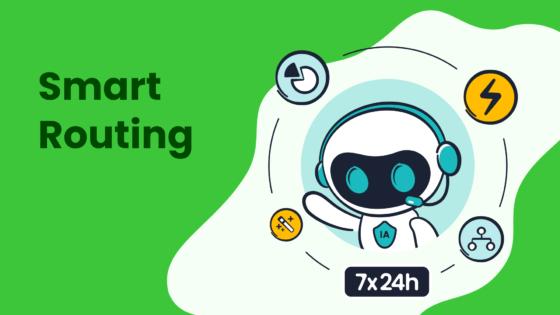
Sobot also supports global operations. With access to phone numbers worldwide and time zone support, it ensures you receive consistent service no matter where you are. Its multilingual capabilities make interactions smoother for diverse customer bases.
By leveraging Sobot’s Voice/Call Center, businesses can enhance customer satisfaction, reduce costs, and improve efficiency. The platform’s innovative features ensure every interaction is seamless and effective.
IVR systems have transformed call centers by streamlining operations and enhancing customer experiences. They handle frequent inquiries efficiently, provide 24/7 support, and enable faster resolutions, ensuring customers feel valued even during peak times. By automating simple tasks, IVR systems allow agents to focus on complex issues, improving service quality and operational efficiency.
Effective IVR design plays a crucial role in achieving these benefits. Features like intuitive menus, AI-powered analytics, and speech recognition ensure smoother interactions. For example, analyzing customer sentiment through speech analytics helps businesses identify pain points and improve service delivery.
Sobot’s Voice/Call Center offers a comprehensive solution for optimizing IVR systems. Its intelligent IVR technology combines smart call routing, multilingual support, and real-time monitoring to deliver seamless customer experiences. With Sobot, businesses can enhance efficiency, reduce costs, and scale operations effortlessly.
FAQ
What is the main purpose of an IVR system in a call center?
An IVR system helps you navigate call menus, access information, and resolve issues without needing an agent. It improves efficiency by automating repetitive tasks. For example, Sobot's intelligent IVR reduces average handle time by routing calls accurately and offering self-service options.
How does an IVR system improve customer satisfaction?
IVR systems enhance your experience by reducing wait times and providing 24/7 support. They also offer personalized options. Sobot’s IVR technology, for instance, uses AI to understand your needs and route calls efficiently, ensuring faster resolutions and higher satisfaction rates.
Can IVR systems handle multilingual support?
Yes, advanced IVR systems like Sobot’s offer multilingual support. This feature ensures you can interact in your preferred language, making the experience smoother. For example, Sobot’s IVR supports languages like English, Spanish, and Mandarin, catering to diverse customer bases.
How do IVR systems save businesses money?
IVR systems automate tasks like account inquiries and appointment scheduling, reducing the need for additional staff. Businesses using Sobot’s IVR report cost savings of up to 20% by optimizing resources and improving call handling efficiency.
What makes Sobot’s IVR system unique?
Sobot’s IVR system stands out with features like AI-powered voicebots, real-time analytics, and global number availability. These tools ensure your calls are routed accurately and handled efficiently. Its 99.99% uptime guarantees reliable service, making it a trusted solution for businesses worldwide.
See Also
Understanding The Efficiency Of Call Center Automation
Best 10 Interactive Voice Response Software For 2024
Comprehensive Guide For Setting Up IVR Software
